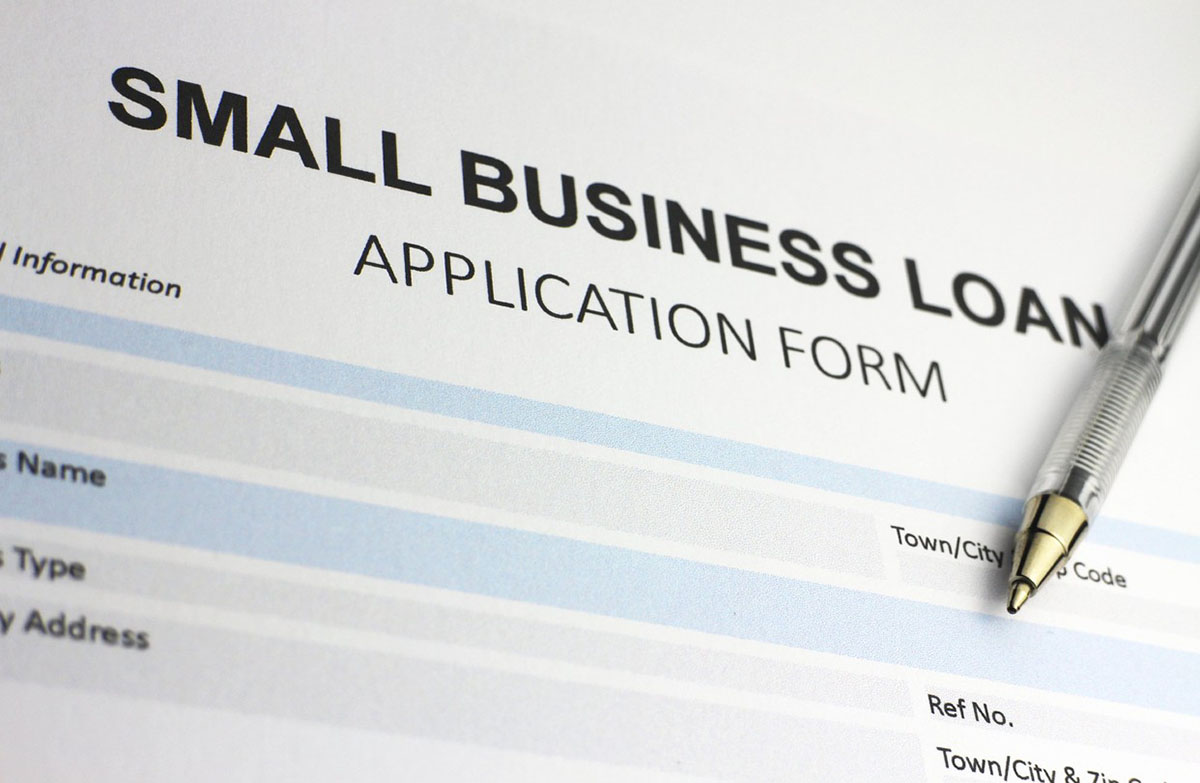

Finance
How To Pay Back Small Business Loan
Modified: December 30, 2023
Looking for ways to pay back your small business loan? Explore finance strategies and tips to efficiently manage your loan repayments and succeed in your business endeavors.
(Many of the links in this article redirect to a specific reviewed product. Your purchase of these products through affiliate links helps to generate commission for LiveWell, at no extra cost. Learn more)
Table of Contents
- Introduction
- Step 1: Assess your loan terms
- Step 2: Create a repayment plan
- Step 3: Prioritize your loan payments
- Step 4: Cut unnecessary expenses
- Step 5: Increase your business income
- Step 6: Consider refinancing options
- Step 7: Communicate with your lender
- Step 8: Seek professional advice if needed
- Conclusion
Introduction
Starting a small business often requires capital, and many entrepreneurs turn to loans for financial assistance. While loans can provide the necessary funds to launch or expand a business, repaying them can be a daunting task. Developing a solid repayment plan is crucial to avoid defaulting on your loan and damaging your credit.
In this article, we will explore the steps you can take to effectively pay back your small business loan. By understanding your loan terms, creating a repayment plan, prioritizing your payments, cutting unnecessary expenses, increasing your business income, considering refinancing options, communicating with your lender, and seeking professional advice when needed, you can navigate the loan repayment process with confidence and ease.
It’s important to remember that each individual’s situation is unique, and there is no one-size-fits-all approach to repayment. However, by following these steps and tailoring them to your specific circumstances, you can take control of your loan repayment journey and pave the way for long-term success.
Step 1: Assess your loan terms
Before you can effectively pay back your small business loan, it’s crucial to have a thorough understanding of the terms and conditions of your loan. Take the time to review your loan agreement and make note of important details such as the interest rate, repayment period, and any potential penalties or fees.
Start by examining the interest rate on your loan. This rate determines the cost of borrowing and can have a significant impact on your repayment strategy. If you have a high-interest rate, consider exploring options to refinance your loan at a lower rate. This could potentially save you money over the long term.
Next, take a close look at the repayment period. How long do you have to repay the loan? Understanding the timeline will help you plan your repayment strategy and set realistic goals. If the repayment period is too short and the monthly payments are too high, you may need to explore options to extend the repayment period and lower the monthly payment amount.
Additionally, be aware of any penalties or fees associated with your loan agreement. Late payment fees or prepayment penalties can add to the overall cost of your loan. Familiarize yourself with these potential charges so that you can factor them into your repayment plan and avoid unnecessary expenses.
Finally, consider any flexibility or repayment options that may be available to you. Some lenders offer programs such as deferment or forbearance, which can provide temporary relief from making regular payments. Explore these options if you are experiencing financial difficulties that may hinder your ability to meet your loan obligations.
By thoroughly assessing the terms of your small business loan, you will have a clear understanding of the financial commitment and be better equipped to develop an effective repayment plan.
Step 2: Create a repayment plan
Once you have assessed your loan terms, the next step in paying back your small business loan is to create a comprehensive repayment plan. A well-thought-out plan will help you stay organized and on track towards meeting your loan obligations.
Start by determining your budget and cash flow. Take a close look at your business’s financial situation and identify how much money you can allocate towards loan repayments. Consider your monthly income, expenses, and any other financial obligations you may have.
Next, decide on a repayment strategy. There are various approaches you can take, depending on your financial circumstances and goals. One common strategy is the snowball method, where you focus on paying off the smallest loan amount first and then snowballing those payments towards larger debts. Another strategy is the avalanche method, where you prioritize paying off loans with the highest interest rates first to minimize the overall interest costs.
It’s important to set realistic goals and timelines for paying back your loan. Break down your repayment plan into manageable milestones, such as monthly or quarterly targets, and track your progress along the way. This will not only help you stay motivated but also ensure that you are making consistent progress towards becoming debt-free.
Consider incorporating extra or lump sum payments into your repayment plan whenever possible. These additional payments can help reduce the principal amount and decrease the overall interest you will pay over the life of the loan. Look for opportunities to generate extra income or allocate surplus funds towards your loan repayment.
Lastly, be prepared to adjust and adapt your repayment plan as needed. Unexpected financial changes or fluctuations in your business’s income may require you to reassess your plan and make necessary adjustments. The key is to remain flexible and proactive in managing your loan repayment journey.
By creating a well-defined repayment plan that aligns with your financial situation and goals, you will have a roadmap to follow and increase your chances of successfully paying back your small business loan.
Step 3: Prioritize your loan payments
When it comes to paying back your small business loan, it’s essential to prioritize your loan payments to ensure that you meet your financial obligations in a timely manner. By understanding which loans to tackle first, you can allocate your resources effectively and minimize the risk of defaulting on your loan.
Start by identifying the loans with the highest interest rates. These loans typically cost you more in the long run, so it’s wise to prioritize paying them off sooner rather than later. By tackling high-interest rate loans first, you can reduce the overall interest expenses and potentially save money over the loan term.
Next, consider the loan terms and repayment schedules. Loans with shorter repayment periods may require higher monthly payments, while loans with longer repayment periods will have lower monthly payments but potentially more interest paid over time. Assess your cash flow and financial capability to determine how much you can comfortably allocate towards each loan.
Another factor to consider is the type of loans you have. For example, if you have a secured loan that is tied to collateral, such as equipment or property, it may be essential to prioritize payments on these loans to avoid the risk of losing valuable assets.
Additionally, evaluate the impact of each loan on your overall financial well-being. If a loan is causing significant financial strain or hindering future business growth, it may be beneficial to prioritize its repayment to alleviate the burden and free up resources for other business needs.
Remember, prioritizing your loan payments is not a one-time decision; it should be reassessed regularly. As you make progress in paying off your loans and your financial situation evolves, you may need to adjust your priorities accordingly.
Communication with your lenders is crucial throughout this process. If you find it challenging to meet your loan obligations or need to make changes to your payment schedule, reach out to your lenders to discuss potential solutions. They may be willing to work with you to find alternatives that can help you stay on track without defaulting on your loan.
By prioritizing your loan payments based on factors such as interest rates, loan terms, loan types, and overall financial impact, you can effectively manage your loan obligations and work towards becoming debt-free.
Step 4: Cut unnecessary expenses
One effective strategy for paying back your small business loan is to identify and cut unnecessary expenses. By reducing your business’s discretionary spending, you can free up more funds to allocate towards loan repayment, ultimately accelerating your path to becoming debt-free.
Start by conducting a comprehensive review of your business’s expenses. Look for areas where you can trim costs without sacrificing the quality of your products or services. This could include renegotiating contracts with suppliers to secure better prices, exploring alternative vendors, or finding ways to streamline operations and reduce labor costs.
Examine your business’s recurring expenses and subscriptions. Evaluate whether each subscription is providing sufficient value and consider canceling those that are not essential. Look for any duplicate or overlapping services that can be consolidated to save money.
Consider implementing cost-saving measures such as energy-efficient practices to reduce utility bills, adopting digital processes to minimize paper and printing costs, and leveraging technology to automate tasks and increase efficiency.
Encourage your team to contribute to cost-cutting efforts by raising awareness about the importance of expense reduction. Implement systems to track and monitor expenses regularly, empowering employees to make informed decisions with regard to spending.
Another area to analyze is your marketing and advertising budget. Explore cost-effective alternatives such as social media marketing, email campaigns, or content marketing strategies that can generate high returns on a smaller investment compared to traditional advertising methods.
As part of cutting unnecessary expenses, it’s essential to distinguish between wants and needs. Focus your efforts on eliminating expenses that are not critical to your business’s immediate success or growth. While it’s important to invest in your business’s future, reducing unnecessary costs can help you allocate more resources towards loan repayment in the short term.
Regularly reassess your business’s expenses and adjust your spending habits accordingly. By consistently evaluating and cutting unnecessary expenses, you can significantly increase your ability to meet your loan payments and accelerate your journey towards financial freedom.
Step 5: Increase your business income
In addition to cutting expenses, another effective strategy for paying back your small business loan is to find ways to increase your business income. By generating more revenue, you can supplement your existing cash flow and have additional funds to allocate towards loan repayment.
Start by evaluating your current products or services and look for opportunities to expand or diversify. Consider introducing new offerings that align with your target market’s needs and preferences. Conduct market research to identify potential gaps or untapped markets that you can capitalize on.
Explore cross-selling and upselling opportunities. Encourage your existing customers to purchase additional products or upgrade to higher-priced options. Offer bundled packages or loyalty programs to incentivize repeat business and increase average transaction value.
Take a close look at your pricing strategy. Analyze your profit margins and consider if there is room to slightly increase prices without negatively impacting customer demand. Revisit your costs and negotiate with suppliers to secure better prices, allowing you to improve your profit margins.
Invest in marketing and advertising initiatives to increase brand awareness and attract new customers. Leverage digital marketing channels such as social media, search engine optimization, and online advertising to reach a wider audience and drive traffic to your business.
Strengthen your customer relationships and focus on delivering exceptional customer service. Satisfied customers are more likely to become loyal advocates and refer others to your business, ultimately driving more sales without significant marketing expenses.
Consider strategic partnerships or collaborations with complementary businesses. By joining forces, you can access a wider customer base and benefit from shared marketing efforts, potentially leading to increased sales and revenue.
Look into expanding your distribution channels. Evaluate if selling your products or services through online platforms, marketplaces, or brick-and-mortar stores can help you reach new customers and generate additional sales.
Seek opportunities for cost-effective business expansion. If your business has the capacity, explore options such as franchising, licensing, or strategic acquisitions that can provide a boost to your revenue stream.
Finally, regularly assess your financial performance and make data-driven decisions. Analyze your sales data, profitability, and customer feedback to identify areas for improvement and make informed business decisions that can positively impact your bottom line.
By implementing strategies to increase your business income, you can generate additional funds to allocate towards loan repayment and expedite your journey towards financial stability and success.
Step 6: Consider refinancing options
If you’re struggling with high-interest rates or unfavorable loan terms, considering refinancing your small business loan can be a smart move to help you pay back your loan more effectively. Refinancing involves obtaining a new loan to replace your existing one, ideally with better terms and conditions.
Start by reviewing your current loan agreement and comparing it with the current market rates and terms. If you find that interest rates have significantly decreased since you first acquired your loan, refinancing may be a viable option to lower your interest costs and potentially reduce your monthly payments.
Research and approach different lenders to get quotes for a refinanced loan. Compare the terms, interest rates, and fees offered by various lenders to ensure you’re getting the best possible deal. Reach out to banks, credit unions, and online lenders that specialize in small business loans.
Before proceeding with a refinance, consider the associated costs and fees. These can include loan origination fees, appraisal fees, or prepayment penalties on your existing loan. Evaluate whether the potential savings from a refinance outweigh the costs involved.
Assess your current business financials and creditworthiness. Lenders will consider factors such as your credit score, business revenue, profitability, and debt-to-income ratio when determining your eligibility for refinancing. Taking steps to improve your credit score or demonstrating consistent profitability can increase your chances of securing more favorable loan terms.
Consider the repayment period when refinancing. While extending the repayment period can lower your monthly payments, it may result in higher overall interest costs. Determine the optimal balance between monthly affordability and minimizing long-term expenses.
Another refinancing option to explore is consolidating multiple business loans into a single loan. Consolidation simplifies your loan structure, making it easier to manage and track repayments. Additionally, it can potentially lead to a lower overall interest rate and reduced administrative costs.
Keep in mind that refinancing is not always the best solution for every business or loan situation. It’s crucial to weigh the benefits and drawbacks carefully and consider your long-term financial goals. Consulting with a financial advisor or loan specialist can provide valuable insights and help you make an informed decision.
By exploring refinancing options, you may find an opportunity to secure more favorable loan terms, reduce your interest expenses, and improve your cash flow for loan repayment.
Step 7: Communicate with your lender
Open and effective communication with your lender is essential when it comes to paying back your small business loan. By maintaining a proactive and transparent relationship, you can address any challenges or changes in your financial circumstances and explore potential solutions that can help you meet your loan obligations.
Start by understanding the communication channels available with your lender. This may include phone, email, or online messaging platforms. Familiarize yourself with their preferred method of communication and establish a regular cadence for updates or discussions.
If you anticipate difficulty in making your loan payments, it’s crucial to communicate with your lender as early as possible. Reach out to them before missing a payment to explain your situation and discuss potential alternatives. Lenders are often willing to work with borrowers to find mutually beneficial solutions.
Be prepared to provide updated financial information and supporting documentation if requested by your lender. This may include income statements, cash flow projections, or business performance reports. Timely and accurate information can help your lender assess your financial position and explore possible options.
Discuss potential temporary payment arrangements if you are facing a short-term cash flow challenge. Lenders may offer deferment or forbearance options that allow you to temporarily pause or reduce your loan payments until your financial situation improves.
If you are experiencing long-term financial difficulties, explore potential loan modification options with your lender. Loan modifications can involve restructuring your loan by extending the repayment period, adjusting interest rates, or modifying repayment terms to better align with your current financial capabilities.
Be proactive in providing updates to your lender if there are significant changes in your business, such as a decline in revenue or unexpected expenses. This demonstrates your commitment to transparency and helps your lender understand your evolving situation.
Keep a record of all communication with your lender, including dates, names of the representatives you spoke with, and a summary of the discussion. This documentation can serve as evidence of your proactive approach and may be useful in resolving any future disputes or misunderstandings.
Remember, lenders have a vested interest in helping you succeed in repaying your loan. By maintaining open lines of communication and demonstrating your commitment to meeting your obligations, you can build trust and potentially negotiate options that align with your financial situation.
Regularly communicate with your lender throughout the loan repayment process, and don’t hesitate to reach out if you encounter any challenges or changes in your circumstances. With effective communication, you can forge a collaborative relationship and navigate the loan repayment journey more smoothly.
Step 8: Seek professional advice if needed
When it comes to paying back your small business loan, seeking professional advice can be invaluable. Financial experts and advisors can provide you with guidance and insights tailored to your specific situation, helping you develop a more effective repayment strategy and navigate any challenges along the way.
If you’re struggling with your loan payments or experiencing financial difficulties, consider consulting with a financial advisor or accountant with expertise in small business finances. They can help you analyze your financial statements, assess your cash flow, and identify areas for improvement.
A financial advisor can also provide you with personalized recommendations and strategies to optimize your loan repayment. They can assist in prioritizing your loan payments, restructuring your budget, and exploring opportunities to increase your business revenue. Their expertise can help you make informed decisions and maximize your resources.
If you’re considering refinancing your loan, a loan specialist or mortgage broker can offer guidance on finding the best options available to you. They have access to a wide range of lenders and can help you navigate the refinancing process, comparing rates, terms, and fees to ensure you secure the most favorable terms.
Legal professionals can also provide valuable insights and advice. If you’re uncertain about the terms and conditions of your loan agreement or need assistance negotiating with your lender, consider consulting with a business attorney. They can review the loan agreement, explain the legal implications, and advocate for your interests.
Government organizations and nonprofit agencies also offer resources and assistance for small businesses. Reach out to organizations such as the Small Business Administration (SBA) or local economic development agencies to access educational materials, counseling services, or loan repayment assistance programs.
Remember that seeking professional advice does come with associated costs, so it’s important to evaluate the potential benefits against your financial situation. Consider the impact that the advice can have on your loan repayment and long-term financial stability. In many cases, the guidance received can far outweigh the initial cost.
When seeking professional advice, be prepared to share relevant financial information and communicate your specific concerns and goals. This will enable the professionals to provide you with accurate and tailored recommendations.
Ultimately, professional advice can provide you with the expertise and guidance necessary to overcome obstacles, make informed decisions, and successfully pay back your small business loan.
Conclusion
Paying back a small business loan may seem like a daunting task, but with careful planning, determination, and the right strategies, you can successfully repay your loan and achieve financial stability for your business.
By assessing your loan terms, creating a repayment plan, prioritizing your loan payments, cutting unnecessary expenses, increasing your business income, considering refinancing options, communicating with your lender, and seeking professional advice if needed, you can effectively manage your loan repayment journey.
Remember to regularly review and adjust your repayment plan as your financial situation evolves. Stay proactive in communicating with your lender and explore potential alternatives or modifications if you face difficulties. Seek professional advice when necessary to gain insights and guidance tailored to your specific circumstances.
Throughout the repayment process, remain focused and determined. Celebrate milestones along the way and stay motivated by keeping your long-term financial goals in mind. The path to becoming debt-free requires perseverance, but it is a journey that can lead to financial freedom and greater opportunities for your small business.
With a solid repayment plan in place and a commitment to managing your finances effectively, you can successfully pay back your small business loan and pave the way for a brighter financial future for your business.














